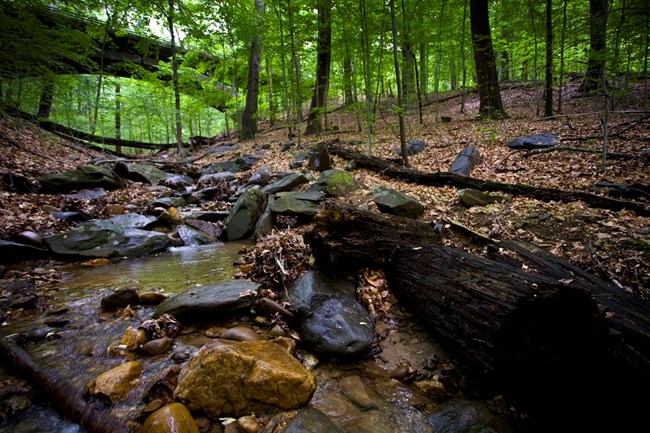
NPS
The National Capital Region Inventory & Monitoring Network monitors air quality, amphibians, birds, forest pests, vegetation, invasive plants, stream water, and stream fish and macroinvertebrates at Rock Creek Park. The results of that monitoring provide park managers with scientific information for decision-making.
Rock Creek Park is one of the largest urban natural parks in the world. Mostly forested, it is dominated by mixed beech and oak plant communities and has extensive stream and wetland habitat.
The park’s main natural resource management concerns are surrounding land use, regionally poor air quality, and overpopulation of deer. Stormwater management is a big concern for stream ecosystems. Regional air quality and land use patterns can have strong effects on park resources.
What's Happening in Rock Creek Park
NCRN Monitoring at Rock Creek Park by the Numbers
| What We Monitor | Sites at Rock Creek* | Monitoring Frequency | Information We Collect |
|---|---|---|---|
| Amphibians | 10 known wetland pools 19 known stream transects |
Annual sampling on a subset of known wetlands Wetland sites are monitored twice per sampling period |
|
| Birds – forest only | 14 (forest bird) | Forest plots are monitored twice a year |
|
| Forest vegetation | 19 (forest vegetation) | Approximately a quarter of plots each year on a four-year cycle |
|
| Stream biota – fish and macroinvertebrates | At streams listed below | Periodic sampling 2007-2014, 2019-2023 |
|
| Stream water quality | 11 (stream site) on Battery Kemble Creek, Broad Branch, Dumbarton Oaks Stream, Fenwick Branch, Klingle Valley Creek, Luzon Branch, Normanstone Creek, Pinehurst Branch, Piney Branch, Reservation 360, and Rock Creek | Stream sites are monitored every other month |
|
Last updated: May 16, 2023
